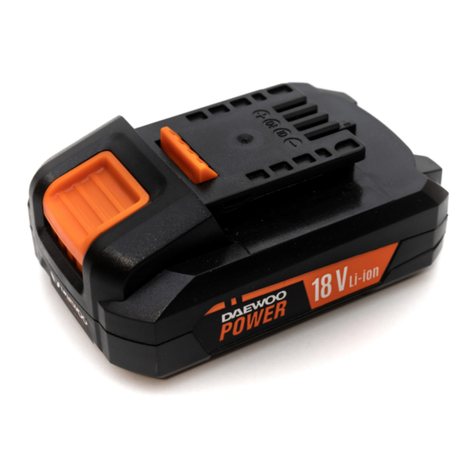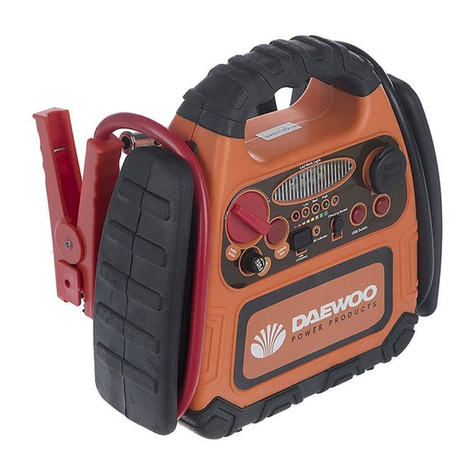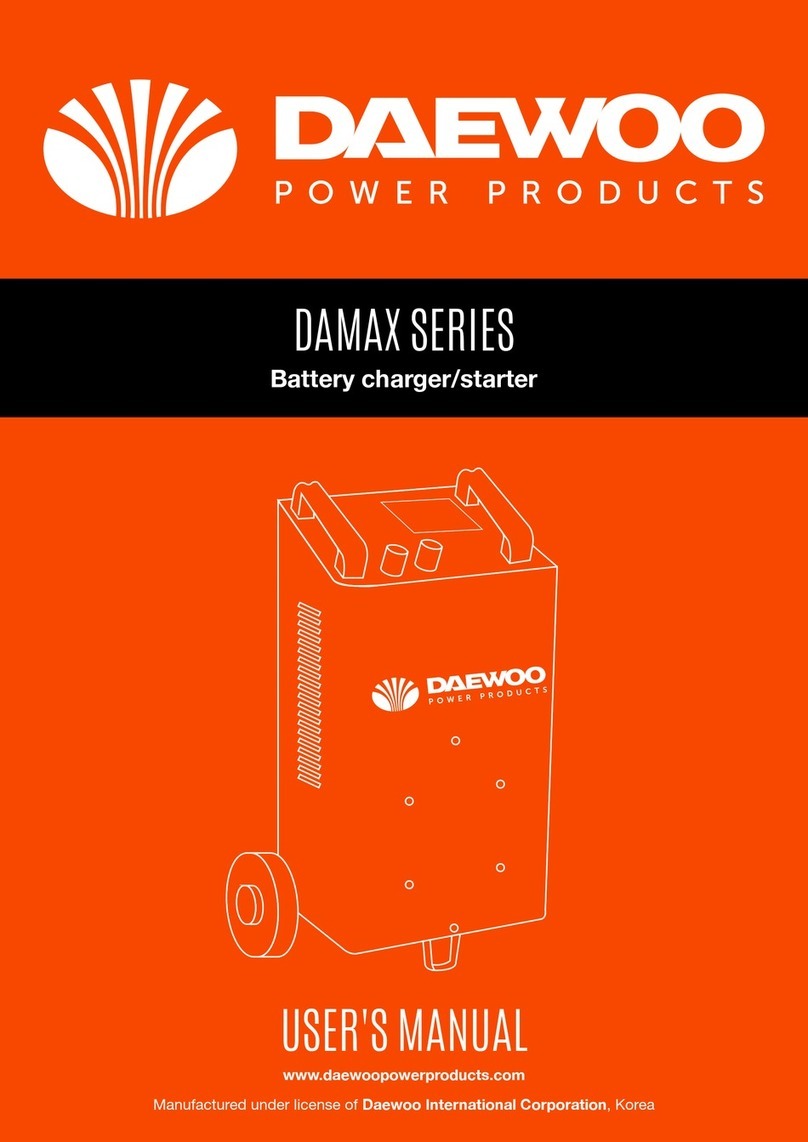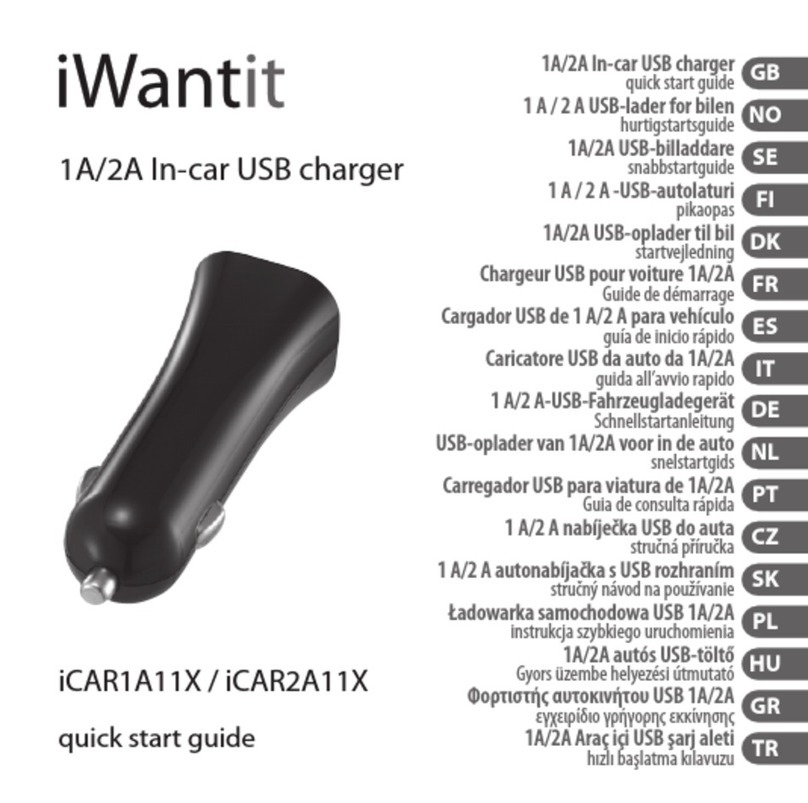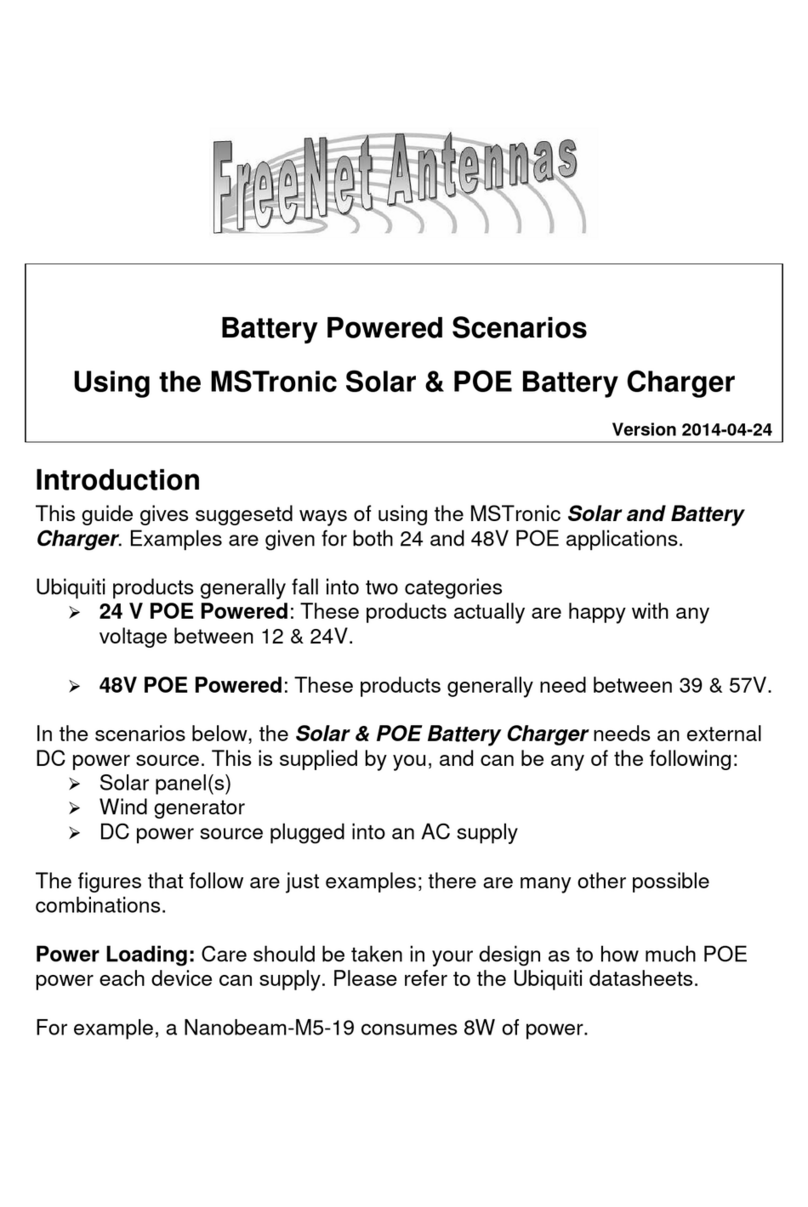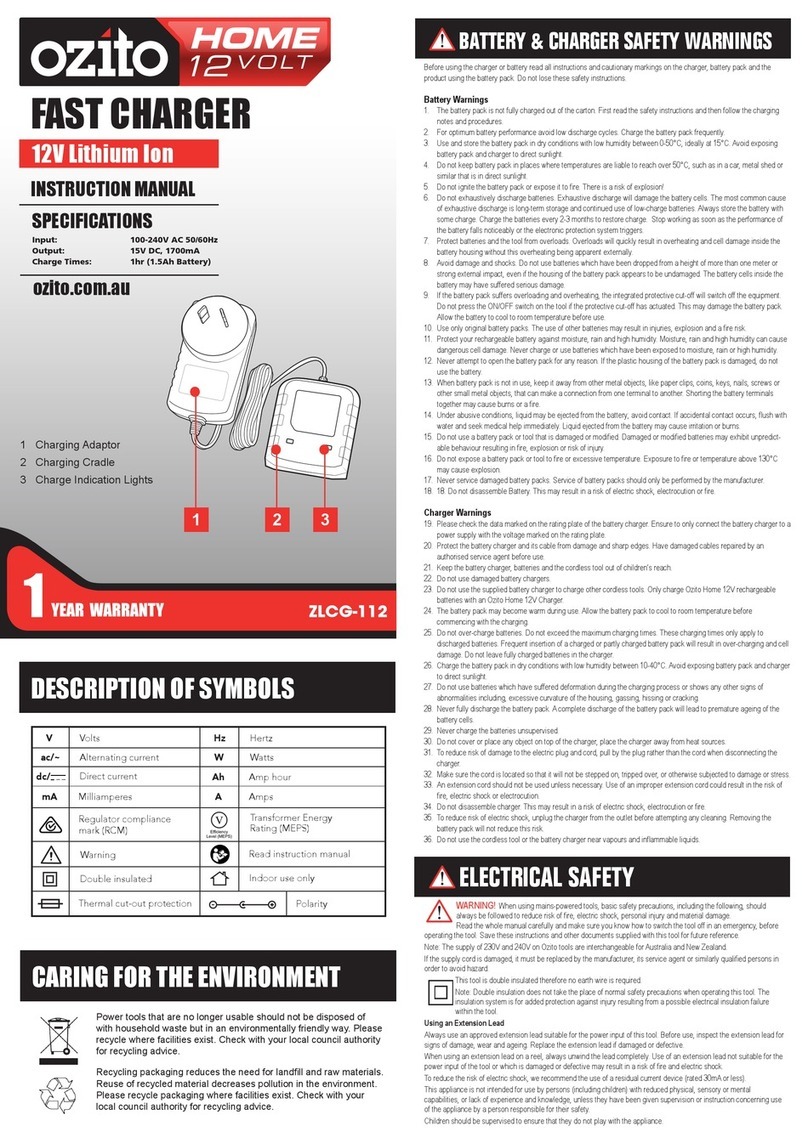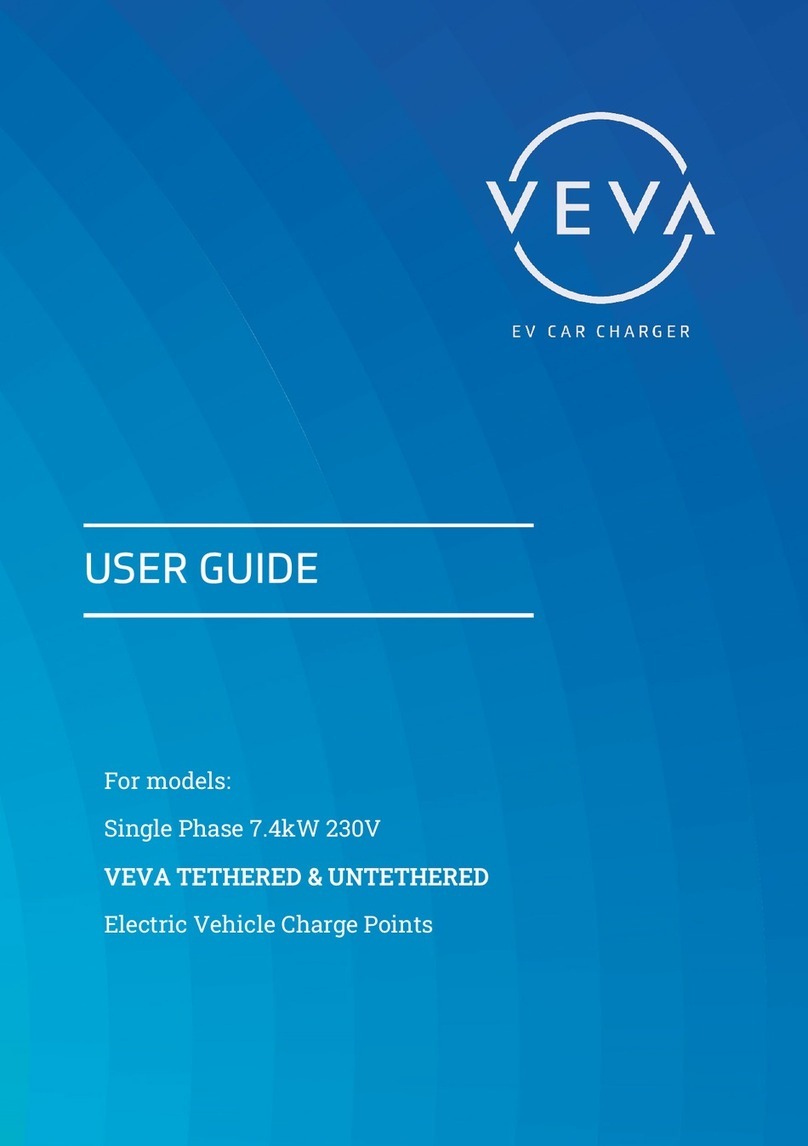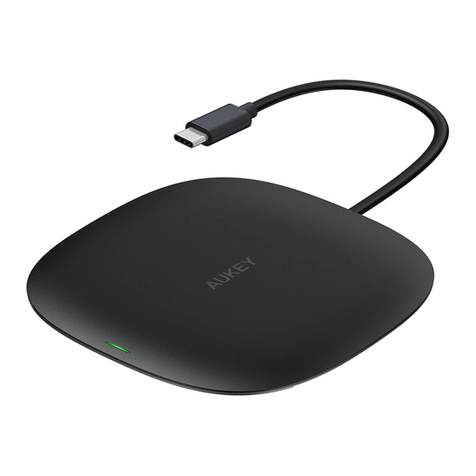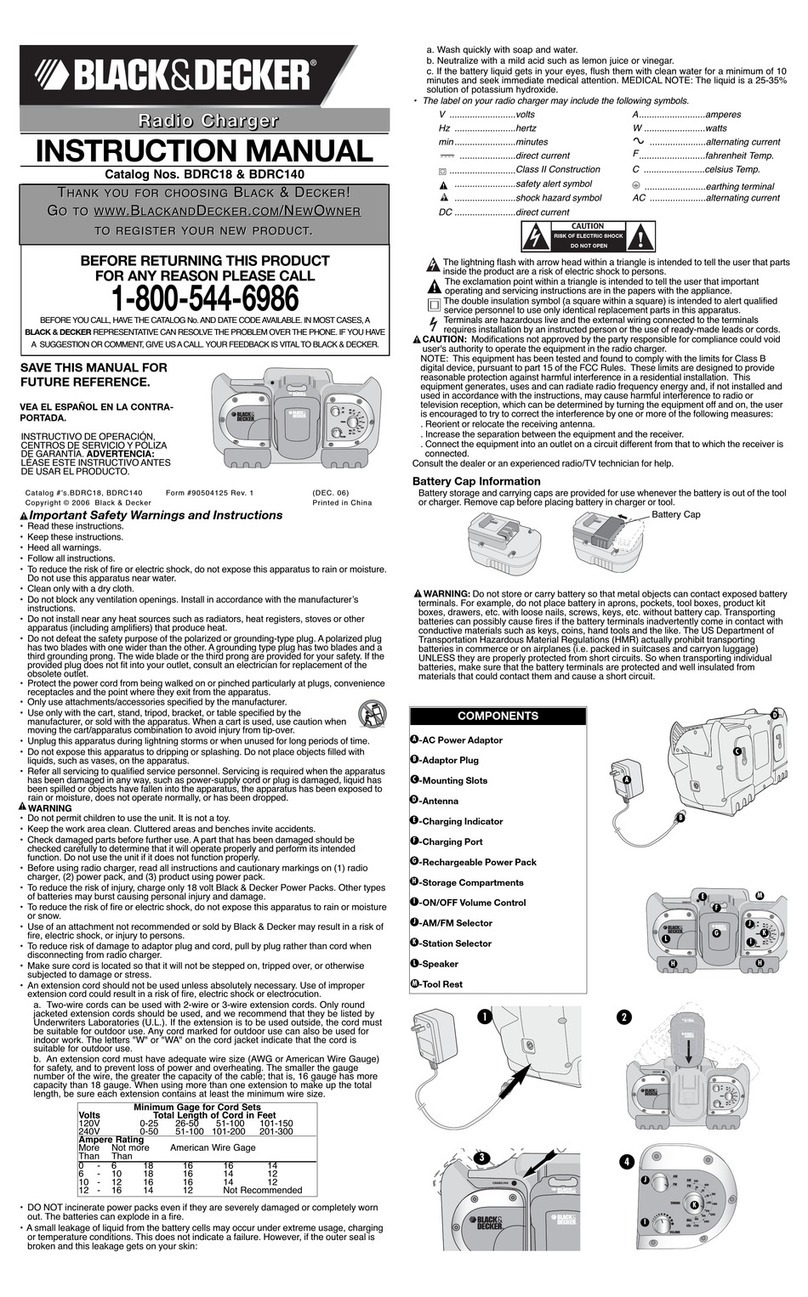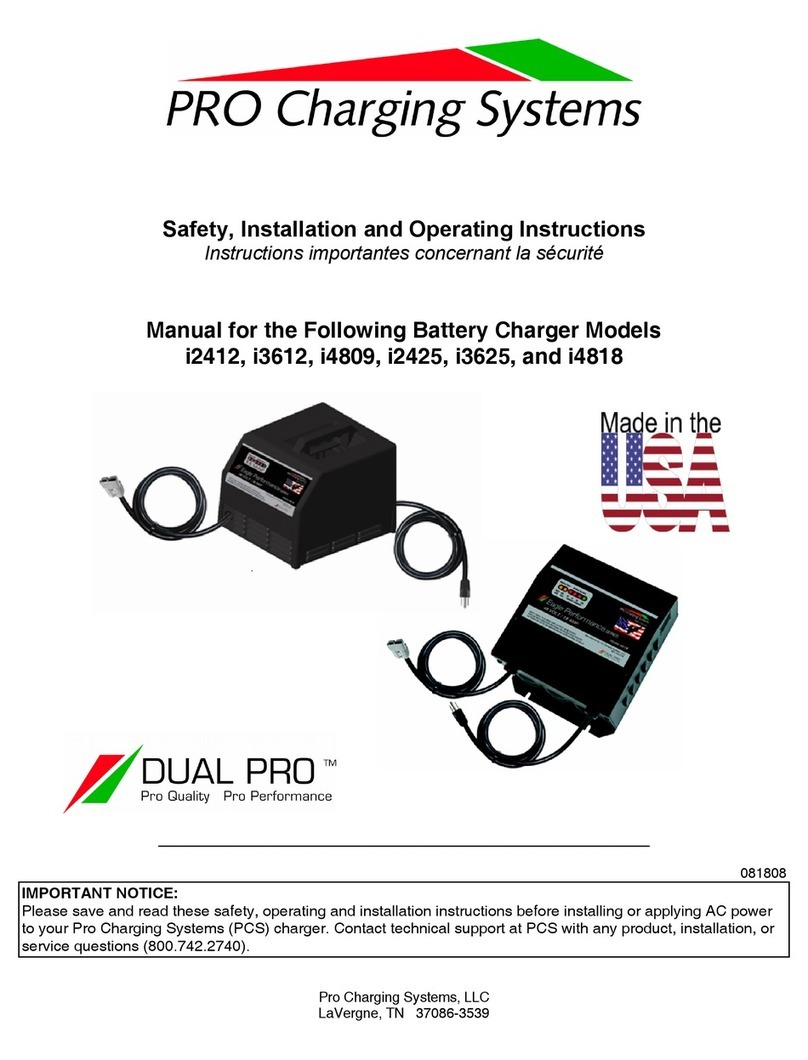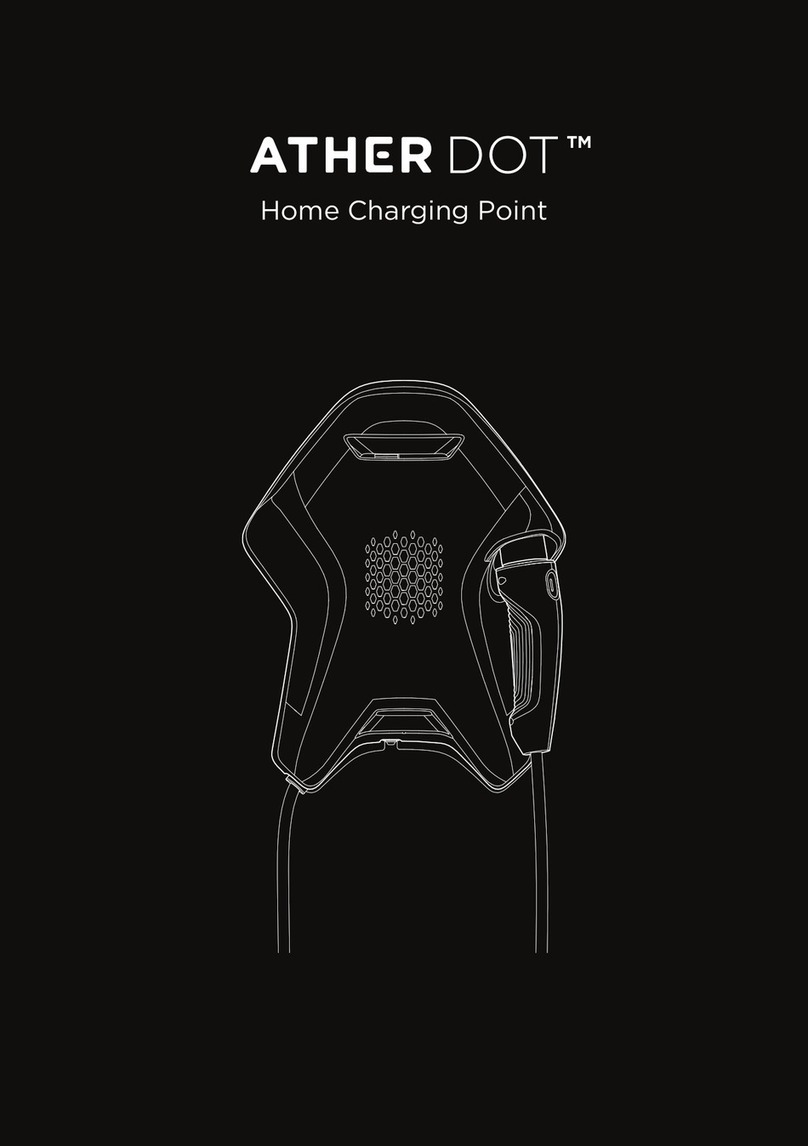Daewoo DAMAX 15 User manual

DAMAX 15/30
Cargador de batería / Battery charger
Fabricado bajo licencia de Daewoo International Corporation, Corea
Manufactured under license of Daewoo International Corporation, Korea
www.daewoopowerproducts.com
MANUAL DE USO/USER’S MANUAL

1
.................................................................................................................
.................................................................................................................
.
..............................................................................................................
3
2
2
..................................................................................................................
...................................................................................................................................
2
2
..........................................................................................................
3
.....................................................................................................................................
.....................................................................................................................................
.....................................................................................................................................
.....................................................................................................................................
...
3
4
4
5
INDICE
1. Introducción
2. Descripción
3. Circuito eléctrico
4. Esquema de panel frontal
5. Especificaciones
6. Normas de seguridad
7. Instalación
8. Conexión a la red eléctrica
9. Mantenimiento
10. Garantía
.................................................................................................................
.................................................................................................................
.
..............................................................................................................
7
6
6
..................................................................................................................
...................................................................................................................................
6
6
..........................................................................................................
7
.....................................................................................................................................
.....................................................................................................................................
.....................................................................................................................................
.....................................................................................................................................
...
7
8
8
10
INDEX
1. Introduction
2. Descripction
3. Electrical circuit
4. Outline of front panel
5. Specifications
6. Safety
7. Installation
8. Connection to the grid
9. Maintenance
10. Warranty

1. INTRODUCCIÓN
Estimado cliente, gracias por su confianza y por la compra de nuestro producto. Antes de utilizarlo, lea
todas las reglas de este manual. Para el óptimo uso y máxima duración debe ser rigurosamente las
instrucciones de operación y mantenimiento. Ante cualquier inconveniente con el mantenimiento o puesta
en marcha, por favor contacte a nuestro servicio técnico especializado.
2. DESCRIPCIÓN
El dispositivo de pre-carga se utiliza para la carga de tensión de la batería de coche de plomo-ácido de
12/24 voltios, y para arrancar el motor.
El usuario debe seleccionar el tipo de cargador de batería en función de los parámetros de la batería y
ajustar el interruptor de voltaje entre 12/24 V.
El dispositivo está equipado con protección térmica. Cuando el dispositivo trabaja a alta corriente podría
calentarse y por ende la unidad podría dañarse. Para ello esta protección térmica se activa con el sobre-
calentamiento de la unidad. La unidad funcionará con dicha protección hasta que la temperatura vuelva
a la normalidad.
El dispositivo está equipado con un fusible de sobrecarga de la red y subidas de tensión.
Cuando se trabaja con una batería con 12 V, verifique que no haya disfunciones en su trabajo.
Si el dispositivo tiene alguna falla, por favor compruebe el voltaje, es posible bajarla de lo normal; 4 B.
Después de confirmar la ausencia de errores, presione «MIN» para la carga.
Tenga en cuenta que este dispositivo produce una carga si el voltaje de la batería no es inferior a 4 voltios.
Cuando se trabaja con una batería de 24 V, compruebe si hay disfunciones en su trabajo.
Compruebe que el voltaje de la batería coincida con los valores especificados en la parte frontal del cargador.
3. CIRCUITO ELÉCTRICO
4. ESQUEMA DE PANEL FRONTAL
1. Manija
2. Amperímetro
3. Indicador de protección
contra el sobrecalentamiento
4. MIN/MAX interruptor
5. Interruptor 12/24
6. Fusible
7. Terminal de salida
8. Cable de red
9. Armazón
2

8.7 kg
220V
50 Hz
700 W
12/24 V
120 - 160 Ah
20 A
320*275*255 mm
5. ESPECIFICACIONES
6. NORMAS DE SEGURIDAD
El cargador sólo se debe utilizar para cargar la batería y para arrancar un motor de coche, no para otros
fines. El servicio técnico debe realizarse solo por personas capacitadas y con experiencia. No está pensa-
do para ser utilizado por personas (incluidos niños) con reducidas capacidades físicas, sensoriales, men-
tales o con falta de experiencia o conocimiento, dado que podría ponerse en riesgo su salud.
- Los niños deben estar bajo supervisión con el fin de evitar jugar con el dispositivo.
Requisitos de seguridad
Nunca reemplace los fusibles al reparar. No se permite el daño mecánico en el cable de aislamiento,
terminales de salida de alambre, así como conseguir los medios químicamente activos (ácidos, aceites,
gasolina, etc.). Cargue la batería en un área bien ventilada.
Prevención de descargas eléctricas y quemaduras.
- Todo el cableado debe cumplir con los reglamentos y normas, así como las instrucciones para la preven-
ción de lesiones.
-Asegúrese de que la puesta en marcha y el cargador estén conectados a tierra correctamente.
-No cargue en un medio ambiente de alta humedad o de lluvia.
-No utilice cables desgastados o dañados. Compruebe siempre las terminales, los cargadores y los
cables de alimentación y asegúrese de que el aislamiento no está dañado.
-No utilice el cargador ni los cables de suministro de energía, que tienen poca sección transversal.
-Si los cables están sobrecalentados, pare la carga para evitar el rápido deterioro del aislamiento.
-Nunca toque ninguna parte del circuito de potencia en alimentación. Después de su uso, retire con
cuidado la terminal y permitir el contacto con partes puestas a tierra.
-No lleve a cabo reparaciones o mantenimiento cuando el cargador de batería está encendido.
-Los cargadores deben ser revisados y mantenidos por personal cualificado.
Para evitar la combustión y gases durante la carga de baterías.
-No cargue en un lugar donde existe la sospecha de una fuga de gas natural u otros gases explosivos; ni
cargar cerca de materiales o líquidos inflamables.
-No cargue cerca de los baños utilizados para la extracción de los aceites que se utilizan con otros agen-
tes de combustión.
Desperdicios.
-Los cargadores están hechos de materiales que no contienen sustancias tóxicas o nocivas.
-Antes de ser desechado, el cargador debe ser analizado y sus componentes deben ser separados de
acuerdo con el tipo de material de fabricación.
Tensión de entrada
Frecuencia
50 Hz
Potencia
700 W
Voltaje de carga
12/24 V
Capacidad de la baterí a
120 - 160 Ah
Corriente de carga
20 A
Dimensiones
290*275*225 mm
Peso
DAMAX - 15
DAMAX - 30
9.2 kg
220V 10%
50 Hz
150 W
12/24 V
35 - 105 Ah/ 12 v 20 - 60 Ah / 24 v
7.5 / 5.0 A
250*210*215 mm
4.8 kg
3
220V 10%
+
-+
-

7. I NSTA L ACIÓ N
El espacio de montaje para el cargador debe estar preparado para garantizar la seguridad, satisfaciendo
los requisitos de operación. El usuario es responsable de la instalación y el uso del dispositivo de acuerdo
con los requisitos del fabricante, en este manual. El fabricante no se hace responsable por los daños cau-
sados por el uso y el mantenimiento no adecuados. El motor de arranque y el cargador deben ser protegi-
dos de la humedad y la lluvia, del daño mecánico, a través del viento y la posible ventilación de dispositi-
vos vecinos, sobrecargas y transporte seguro.
Después del almacenamiento en una habitación fría o húmeda y después del transporte, el dispositivo
antes de encenderse debe ser dejado bajo condiciones normales durante al menos 2 horas.
1) Evite instalar la unidad en campo abierto, soleado, con una fuerte influencia del sol.
2) Instale la unidad en una superficie limpia, seca y plana. Uno debe evitar vibraciones, ingestión de polvo
de hierro, polvo y suciedad.
3) Instale la unidad en un lugar seco y sin agua, para evitar el riesgo de descarga eléctrica.
4) Antes de empezar a limpiar los contactos y terminales del cargador.
Conecte el cable y abrazaderas de acuerdo a la polaridad y conecte la unidad a la red a 220V - 50Hz. Con
la instalación adecuada de los cables a la batería, la unidad mostrará el valor actual en el amperímetro.
5) Acciones del usuario en la ausencia de la tensión de salida/corriente:
a. Compruebe si el interruptor está en correcta posición 12V / 24V.
b. Compruebe si los ajustes no han cambiado por sobrecalentamiento o sobrecarga.
c. Corrobore el fusible.
d. Si después de estas acciones el problema persiste, póngase en contacto con el servicio técnico espe-
cializado.
¡Atención! ¡No invierta la polaridad para evitar un corto circuito! ¡Los agujeros de ventilación de la batería
deben estar abiertos!
8. CONEXIÓN A LA RED ELÉCTRICA
¡ADVERTENCIA! La conexión del cargador a la red debe ser realizada por un electricista calificado.
Antes de conectar el cargador a la red eléctrica, asegúrese de que el tamaño y la frecuencia de la tensión
corresponden a la tensión en la placa de identificación.
9. MANTENIMIENTO
¡ATENCIÓN!
Después del trabajo o al encontrar el pre-cargador a bajas temperaturas por debajo (+5ºC), no encienda
la unidad durante 2 horas después de trasladarla a un lugar cálido, para evitar la condensación. Adverten-
cia: Desconecte la alimentación eléctrica antes del mantenimiento.
Limpie regularmente la suciedad y el polvo acumulado en el interior con aire comprimido. No utilice direc-
tamente el flujo de aire a los componentes eléctricos para evitar dañarlos.
Lleve a cabo inspecciones regulares para detectar cables desgastados o conexiones sueltas, que causan
el recalentamiento y posibles daños.
Es necesario llevar a cabo una inspección completa al menos una vez al año.
Cualquier tipo de cambios en el dispositivo de circuito electrónico, el uso de repuestos no originales o en
caso de un mal funcionamiento o daños, le recomendamos que contacte con nuestro servicio técnico.
4

GARANTÍA
LA GARANTÍA NO CUBRE
Modelo del producto
Número de Serie
Nombre de usuario
Fecha de venta
Empresa
Firma del cliente
El período de garantía comienza desde la fecha de venta del producto y cubre 2 años para todos los productos.
Durante el período de garantía se eliminan los fallos causados por el uso de materiales de mala calidad en la
producción y mano de obra cuya culpa sea admitida por el fabricante. La garantía entra en vigor desde que se
llenó correctamente la tarjeta de garantía y cupones de corte. El producto es aceptado para su reparación en su
forma pura y plena integridad.
• Daños mecánicos (grietas, astillas, etc.) y daños
causados por la exposición a medios agresivos, objetos
extraños dentro de la unidad y las rejillas de ventilación,
así como de los daños producidos como consecuencia de
un almacenamiento inadecuado (corrosión de las partes
metálicas);
• Fallos causados por sobrecarga o mal uso del producto,
el uso del producto para otros nes, así como la
inestabilidad de la electricidad. Una señal segura de que
los productos de sobrecarga se están derritiendo o
decolorando las piezas debido a la alta temperatura son el
fallo simultáneo de dos o más nodos, el sumario sobre la
supercie del cilindro y el pistón, y la destrucción de los
anillos de pistón. Además, la garantía no cubre fallas de
reguladores de energía de tensión automáticos debido a la
operación incorrecta;
• Fallos causados por la obstrucción de los sistemas de
combustible y refrigeración;
• Para piezas de desgaste (escobillas de carbón,
correas, juntas de goma, sellos de aceite, amortiguadores,
resortes, embragues, bujías, bufandas, boquillas, poleas,
rodillos guía, cables de arranque de retroceso, platos,
mandriles, baterías extraíbles, ltros y seguridad elementos,
grasa, dispositivos extraíbles, equipos, cuchillos,
taladros, etc.);
• Los cables eléctricos con daños mecánicos y térmicos;
• El producto, si fue abierto o reparado fuera del Centro
de Servicio Autorizado.
• la prevención, productos de cuidado (limpieza, lavado,
lubricación, etc.), la instalación y conguración del producto;
• Los productos de desgaste natural (cuota de
producción);
• Fallos causados por el uso del producto para las
necesidades relacionadas con las actividades empresariales;
• Si la tarjeta de garantía está vacía o el sello del
Vendedor faltante;
• Ausencia de la rma del titular de la tarjeta de garantía.
TARJETA DE GARANTÍA
Producto
Modelo
Empresa
Fecha
de Venta
Producto
Modelo
Empresa
Fecha
de Venta
Producto
Modelo
Empresa
Fecha
de Venta
El producto está en buenas condiciones y completo. Lea y acepte los términos de la garantía.

1. INTRODUCTION
Dear Customer, thank you for your trust and for buying our product. Before operating, read all the rules of
this manual. For optimal use read the maximum operating and maintenance instructions thoroughly. For
any problem with maintaining or commissioning, please contact our service shop.
2. DESCRIPTION
Charger device is used for charging the battery voltage of lead-acid car 12/24 volts, and to start the
engine. The user must select the type of battery charger according to the parameters of the battery and
adjust the voltage switch between 12/24 V.
The device is equipped with thermal protection. When the device operates at high current can become hot
and hence may damage the unit. To do this, thermal protection is activated with the overheating of the
unit. The unit will operate with this protection until the temperature returns to normal. The device is equi-
pped with an overload-protection network and surges.
When working with a 12 V battery, check for failures in their work.
If the device is faulty, please check the voltage, it is possible to lower than normal: 4 B. After confirming
the absence of errors, press "MIN" to the load.
Note that this device produces a charge if the battery voltage is not less than 4 volts. When working with
a battery of 24 V, check for failures in their work. Check that the battery voltage match the values specified
in the front of the charger.
3. ELECTRICAL CIRCUIT
4. OUTLINE OF FRONT PANEL
1. Handle
2. Ammeter
3. Indicator overheat protection
4. MIN / MAX switch
5. Switch 12/24
6. Fuse
7. Output Terminal
8. Cable Network
9. Frame
6

5. SPECIFICATIONS
6. SAFETY
The charger should only be used to charge the battery and to start a car engine, not for other purposes.
The service must be performed only by trained and experienced persons. It is not intended for use by
persons (including children) with reduced physical, sensory, mental capabilities or lack of experience or
knowledge, since it could put your health at risk.
- Children should be supervised in order to avoid playing with the device.
Safety requirements
Never replace the fuses to repair. Mechanical damage to the cable insulation wire output terminals is not
permitted, as well as getting the chemically active media (acids, oils, gasoline, etc.). Charge the battery in
a well ventilated areas.
Prevention of electric shock and burns.
- All wiring must comply with regulations and standards and instructions to prevent injuries.
- Ensure the implementation and the charger is properly grounded.
- Do not charge in an environment of high humidity or rain.
- Do not use damaged or worn cables. Always check the terminals, chargers and power cables and make
sure the insulation is not damaged.
- Do not use the charger or power supply cables, with little cross section.
- If the cables are overheated, stop charging to prevent rapid deterioration of the insulation.
- Never touch any part of the power supply circuit. After use, carefully remove the terminal and allow con-
tact with earthed parts.
- Do not perform repairs or maintenance when the battery charger is on.
- The chargers should be checked and maintained by qualified personnel.
To prevent the combustion gases during charging of batteries.
- Do not charge in a place where there is suspicion of leaking natural gas and other explosive gases; or
load near flammable materials or liquids.
- Do not charge near the baths used for the extraction of oils used with other agents combustion.
Waste.
- The boots are made of materials that do not contain toxic or harmful substances.
- Before being dismissed, the charger must be analyzed and its components must be separated accor-
ding to the type of construction material.
Input voltaje
Frequency
Power
Load voltaje
Battery capacity
Current charge
Dimensions
Weight
DAMAX - 15 DAMAX - 30
50 Hz
700 W
12/24 V
120 - 160 Ah
20 A
290*275*225 mm
9.2 kg
220V 10%
50 Hz
150 W
12/24 V
35 - 105 Ah/ 12 v 20 - 60 Ah / 24 v
7.5 / 5.0 A
250*210*215 mm
4.8 kg
220V 10%
+
-
7

7. INSTALLATION
The installation space for the charger must be prepared to ensure safety, meet operating requirements.
The user is responsible for the installation and use of the device according to the manufacturer's require-
ments in this manual. The manufacturer is not liable for damages caused by the use and inadequate main-
tenance. The starter and charger must be protected from moisture and rain, mechanical damage, through
wind and possible ventilation of neighboring devices, overload and handling.
After storage in a cold or wet room and after transportation, before going on the device must be left in
normal conditions for at least 2 hours.
1) Avoid installing the unit in open, sunny, with a strong influence of the sun field.
2) Install the unit in a clean, dry, flat surface. One must avoid vibration, dust ingestion of iron, dust and dirt.
3) Install the unit in a dry place without water, to avoid the risk of electric shock.
4) Before starting to clean the contacts and terminals of the charger.
Connect the cable clamps according to the polarity and connect the unit to the network 220V - 50Hz. With
proper installation of the cables to the battery, the unit displays the current value on the ammeter.
5) User actions in the absence of the output voltage / current:
a. Check if the switch is properly set 12V / 24V.
b. Check the settings have not changed from overheating or overloading.
c. Corroborate the fuse.
d. If after these actions the problem persists, contact the service shop.
Attention! Do not reverse the polarity to prevent a short circuit! The ventilation holes of the battery must be
open!
8. CONNECTION TO THE GRID
CAUTION! Connecting the charger to the mains must be performed by a qualified electrician.
Before connecting the charger to the mains, ensure that the size and frequency of the voltage corresponds
to the voltage on the nameplate.
9. MAINTENANCE
ATTENTION!
After work or to find the loader at low temperatures below (+5), do not turn on the unit for 2 hours after
moving it to a warm place, to avoid condensation. Warning: Disconnect power before servicing.
Clean dirt and accumulated inside with compressed air dust regularly. Not directly use the airflow to the
electrical components to avoid damage.
Carry out regular inspections to detect loose connections or frayed wiring, causing overheating and possi-
ble damage.
It is necessary to conduct a thorough inspection at least once a year.
Any changes in the electronic circuit device, the use of non-original parts or in case of a malfunction or
damage, we recommend that you contact our technical service.
8

DECLARATION OF CONFORMITY
We: MAXTOP GROUP CO., LIMITED
Xiazhaiwu Village, Shiqitou Town, Wenling City, Zhejiang, China
Declare that the Product detailed below:
Battery Charger
Model: DAMAX-15 ( CB-15 )
Brand:
Satisfies the requirement of the Council Directives:
Low Voltage 2014/35/EU
Electromagnetic Compatibility Directive 2014/30/EU
Name and address of authorized person to compile the technical file:
CHINA CEPREI (SICHUAN) LABORATOR, Address: No.45 Wen Ming Dong Road Longquanyi Chengdu 610100
P.R. China
Notified body: Ente Certificazione Machine Srl
Number of notified body: 1282
and conforms to the standard:
EN 60335-1:2012+ A11: 2014 + AC:2014
EN 60335-2-29: 2004 + A2: 2010
EN 62233: 2008+ AC:2008
EN 55014-1: 2006+A1:2009 + A2:2011
EN 55014-2: 2015
EN 61000-3-2: 2014
EN 61000-3-3: 2013
Ente Certificazione Machine Srl, Address: Via Ca’Bella, 243 - Loc. Castello di
Serravalle- 40053 Valsamoggia (BO)- ITALY, Notified Body no. 1282, has issued
Certificate of Compliance NO.2T160411. ZPEU033, Technical Construction File no.
SCC (16) -41303A-39-10-LVD/EMC
Position of Signatory: General Manager
Ms. Lynn Gu
Date: 16-11-2020
Wenling , Zhejiang , CHINA

GUARANTEE
WARRANTY DOES NOT COVER
Product model
Serial number
Username
Date of sale
Company
Client's signature
The warranty period starts from the date of sale of the products and covers 2 years for all power products.
During the warranty period, free failures caused due to the use of poor-quality materials in the production and
manufacturer workmanship admitted fault are removed. The guarantee comes into force only when warranty card and
cutting coupons are properly filled. The product is accepted for repair in its pure form and full completeness.
• Mechanical damage (cracks, chips, etc.) and damage
caused by exposure to aggressive media, foreign objects
inside the unit and air vents, as well as for damage occurred
as a result of improper storage (corrosion of metal parts);
• Failures caused by overloading or product misuse, use of
the product for other purposes. A sure sign of overload
products is melting or discoloration of parts due to the high
temperature, simultaneous failure of two or more nodes,
teaser on the surfaces of the cylinder and the piston or
destruction of piston rings. Also, the warranty does not cover
failure of the automatic voltage regulator due to incorrect
operation;
• Failure caused by clogging of the fuel and cooling systems;
• Wearing parts (carbon brushes, belts, rubber seals, oil
seals, shock absorbers, springs, clutches, spark plugs,
mufflers, nozzles, pulleys, guide rollers, cables, recoil starter,
chucks, collets, removable batteries, filters and safety elements,
grease, removable devices, equipment, knives, drills, etc.);
• Electrical cables with mechanical and thermal damage;
• Product opened or repaired by a non-authorized service center.
• Prevention, care products (cleaning, washing, lubrication,
etc.), installation and configuration of the product;
• Natural wear products (production share);
• Failures caused by using the product for the needs related
to business activities;
• If the warranty card is empty or missing seal (stamp) of the Seller;
• The absence of the holder's signature on the warranty card.
WARRANTY CARD
The product is in good conditions and fully complete. Read and agree the terms of the warranty.
Product
Model
Company
Date
of sale
Product
Model
Company
Date
of sale
Product
Model
Company
Date
of sale

www.daewoopowerproducts.com
Fabricado bajo licencia de Daewoo International Corporation, Corea
Manufactured under license of Daewoo International Corporation, Korea
6. SAFETY
The charger should only be used to charge the battery and to start a car engine, not for other purposes.
The service must be performed only by trained and experienced persons. It is not intended for use by
persons (including children) with reduced physical, sensory, mental capabilities or lack of experience or
knowledge, since it could put your health at risk.
- Children should be supervised in order to avoid playing with the device.
Safety requirements
Never replace the fuses to repair. Mechanical damage to the cable insulation wire output terminals is not
permitted, as well as getting the chemically active media (acids, oils, gasoline, etc.). Charge the battery in
a well ventilated areas.
Prevention of electric shock and burns.
- All wiring must comply with regulations and standards and instructions to prevent injuries.
- Ensure the implementation and the charger is properly grounded.
- Do not charge in an environment of high humidity or rain.
- Do not use damaged or worn cables. Always check the terminals, chargers and power cables and make
sure the insulation is not damaged.
- Do not use the charger or power supply cables, with little cross section.
- If the cables are overheated, stop charging to prevent rapid deterioration of the insulation.
- Never touch any part of the power supply circuit. After use, carefully remove the terminal and allow con-
tact with earthed parts.
- Do not perform repairs or maintenance when the battery charger is on.
- The chargers should be checked and maintained by qualified personnel.
To prevent the combustion gases during charging of batteries.
- Do not charge in a place where there is suspicion of leaking natural gas and other explosive gases; or
load near flammable materials or liquids.
- Do not charge near the baths used for the extraction of oils used with other agents combustion.
Waste.
- The boots are made of materials that do not contain toxic or harmful substances.
- Before being dismissed, the charger must be analyzed and its components must be separated accor-
ding to the type of construction material.
This manual suits for next models
1
Table of contents
Languages:
Other Daewoo Batteries Charger manuals
